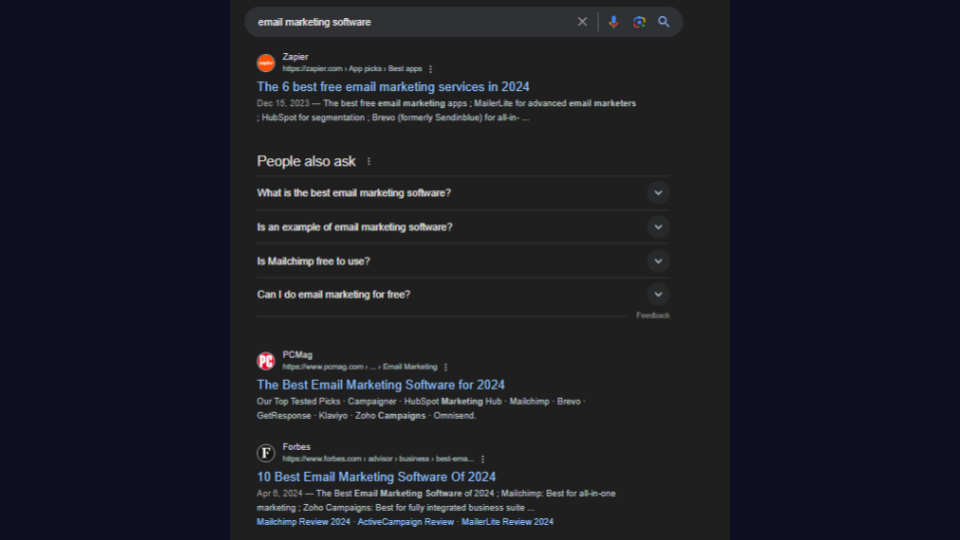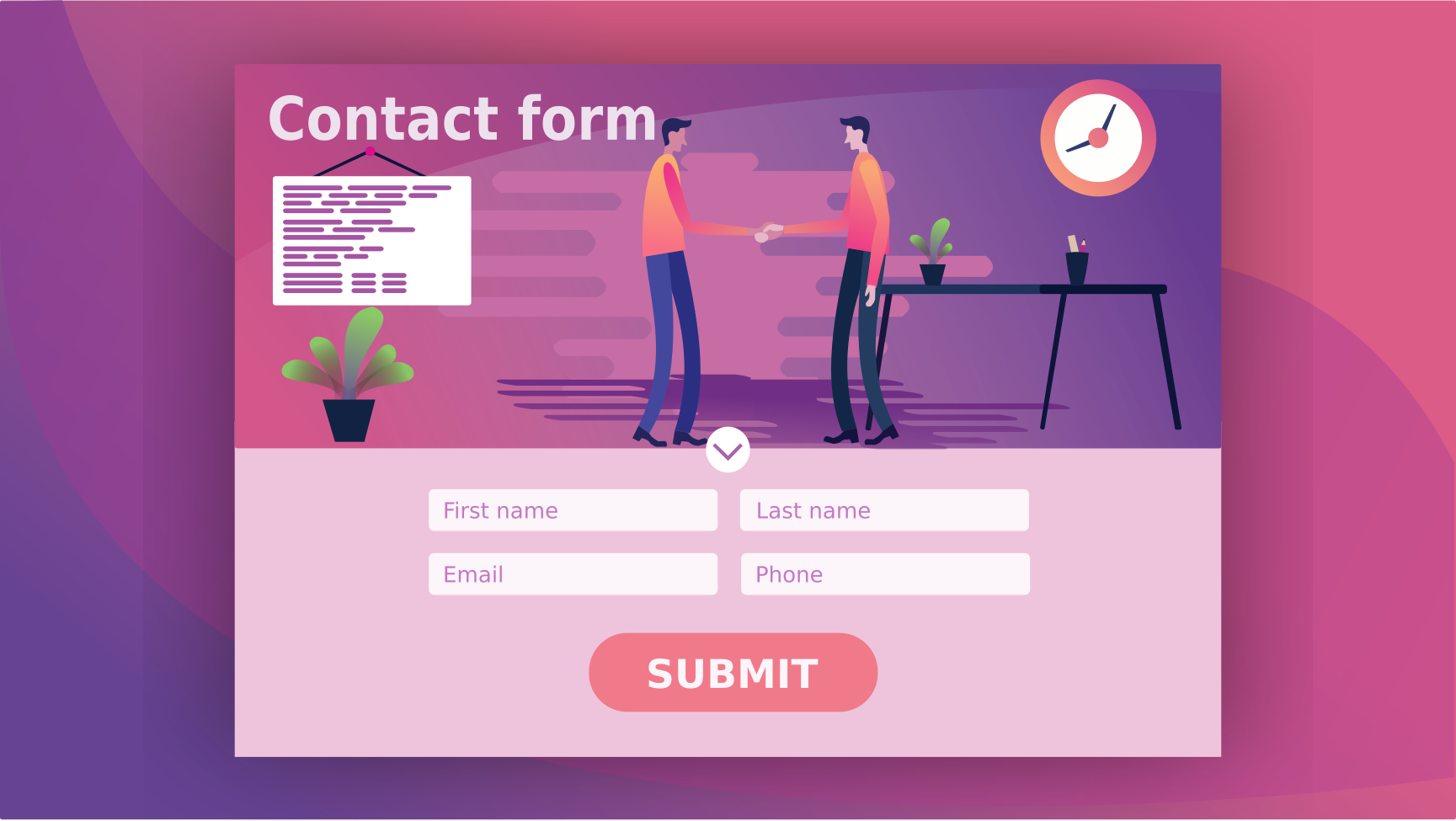Strategies for Using Content Marketing to Increase Web Leads
Content marketing is crucial when it comes to driving web lead generation. In fact, according to 74% of companies, content marketing has proven effective for this purpose. That’s why a majority of content marketers devote more than 10% of their marketing budgets to content. Does this mean you just create random content and wait for all those leads to come? The answer is no, of course.
For content marketing to boost your lead generation efforts, you need to do it the right way. This article explores how you can leverage content marketing in web lead-generation campaigns effectively. Whether you're tweaking your current methods or completely revamping your approach, these insights will help you develop a more targeted approach to capture and convert more leads.
What Is Content Marketing Lead Generation?
Content marketing lead generation is a targeted strategy designed to attract potential customers with compelling content and convert them into leads. This involves creating and sharing materials such as guides, videos, and infographics that directly address the pain points and interests of your target audience. This content typically includes clear calls to action that encourage visitors to sign up for newsletters, download resources, or request more information.
These prompts effectively guide them through the decision-making process, increasing their chances of converting into ideal customers down the line. Overall, content marketing helps lead generation by building strong, meaningful connections with potential customers. By creating engaging content tailored to the specific interests of your target audience, your business attracts attention and builds trust and credibility. As trust increases, customers are more likely to explore your offerings and continue along the buyer journey.
How to Effectively Use Content Marketing in Web Lead Generation Campaigns
Now that you know its benefits, let’s explore how you can leverage content marketing in lead-generation efforts for the best results.
1. Understand the Target Audience
You'll need to know your target customers’ needs, preferences, and behaviors. This understanding will enable you to tailor your content strategy and ensure your pieces resonate with them. You can get this information from tools such as surveys and analytics platforms. Use the data to create detailed buyer personas—semi-fictional representations of your ideal customers. These personas should serve as your guide when creating your content. Below is an example of a persona:

The more detailed your buyer persona is, the better.
2. Create Quality Content
Effective content marketing in lead generation campaigns entails creating, well, content, of course. But this content shouldn’t be just some random, hastily-created piece. Apart from the fact that it should be based on your buyer personas, it should be high-quality. High-quality content means it is accurate and reliable. It should be well-researched. Since this content should also be visible for you to get more leads in the first place, then quality content in the context of SEO and content marketing in lead generation also means content that satisfies the user intent. After all, Google’s ranking systems prioritize pieces that provide the information or solution users are looking for.
But let’s back up a bit. What exactly is user intent? User intent or search intent is the reason why someone types a specific query into a search engine. For instance, when I type in “best email marketing software,” I’m not looking for a specific answer to a question (informational intent). Nor am I looking to buy email marketing software at the moment (transactional intent) or to navigate a page (navigational intent). I’m just doing my research on potential email marketing tools to purchase in the future (commercial intent). Google understands this so when I type in that query, it serves these types of content:
In other words, to create quality content, make sure you understand users’ motivation behind the keywords you’re targeting. You can get an idea of this by simply typing in the keyword you want to target with your piece of content. Then look at the entries that appear at the top of search engine results pages. You should create similar content to increase your chances of ranking in SERPs.
So, as an example, if you want to target the keyword “best email marketing software,” you’d create a list post similar to the ones we saw in the screenshot above. Ordinary blog posts aren’t the only types of content you can create to boost lead generation. Here’s a rundown of other pieces of content you can consider:
Infographics: Infographics turn complex data into visually appealing, easy-to-digest content. They can appear in image search results. Their format also naturally encourages sharing on social platforms, which is great for extending your reach. Adding infographics to your content enhances user engagement, too. Websites using infographics typically see a 12% increase in traffic compared to others.
Videos: Videos can come in diverse formats like tutorials and testimonials. They can keep your viewers on your site longer, boosting your SEO in the process by signaling valuable content to search engines. Optimizing engaging videos with keyword-rich descriptions will make them easily searchable as well.
How-to Guides: How-to guides provide targeted, step-by-step solutions to specific problems, making them excellent lead magnets. With the right keywords, they can become highly searchable in search engines as well.
For optimal results, leverage different content types as part of your content marketing strategy. This will help ensure you cater to diverse content preferences, boosting your lead-generation efforts. You can also create several of these types of content for other platforms like social media.
3. Use Content Calendar
Keeping a well-organized content calendar is crucial to the success of your content marketing efforts. A calendar allows you to organize and schedule your content. It also ensures you don’t fall into the trap of churning out similar pieces all over again. Without content variety, you might only put a dent in your lead generation campaigns. Here are some tips on how to effectively plan your content using a calendar:
a. Set your publishing interval.
b. Identify key events.
c. Determine the relevant content pieces to publish on key events and other publication dates.
d. Specify the platform where each content will be published in your calendar.
e. Make sure you diversify your content. Experiment with different formats and topics that align with your target audience’s preferences.
To get you started, here is a template you can use:
Make sure you share your calendar with members of your content team if you have one. This way, you’re all on the same page about deadlines.
4. Leverage Content Promotion Strategies
Remember when we said quality content necessarily satisfies the user intent and, therefore, appears in SERPs? Remember, too, when we said you could also create lead-generation content for other platforms like social media? Well, that doesn’t mean you should rely only on SEO or social media to get eyeballs on your content pieces to enhance lead generation. You should also leverage content promotion strategies to maximize reach.
Here are some distribution channels to consider and some related best practices:
Email Marketing Campaigns: Email marketing remains one of the most direct and personal ways to engage with your audience. Use it to distribute your content directly to interested parties. Segment your email lists to tailor the content you promote to different audience groups, increasing the chances of engagement and conversion. You can just include links to your social media posts and site articles in your emails as part of your content promotion.
Events: Why not promote your informative posts and videos in the industry events you attend? You can create the best virtual business card that contains links to your quality content. Then just distribute your card so attendees can easily access your work and convert. You can use these events as a means to directly generate more leads as well, by the way. Your virtual business card can also give recipients access to your contact form for efficient and effective lead capture.
A digital business card goes beyond just sharing your contact details—it allows you to showcase your brand, link to your best content, and even integrate social media and booking links. It's easily shareable via QR code or URL, making networking seamless during both virtual and in-person events. Plus, it's eco-friendly and can be updated anytime without needing reprints.
Online Communities: Sites such as Quora and Reddit are great places to share your content to boost lead generation. Just be mindful of each site’s guidelines for posting. With Quora, for instance, you can’t be blatantly promotional. You’ll have to weave your content link naturally into threads. So, answer a question posed by a member of the online community first, then leave the link to your content to support your answer.
5. Make Data-Driven Adaptations
Regularly analyzing key metrics helps you understand how effectively your content engages your audience and converts them into leads. So, if it’s not effective, you can make the necessary adjustments to your content marketing strategy to improve results. Leverage technologies such as Google Analytics 4 and social media analytics to get the data you need. You can use Google Analytics 4 to view metrics such as views, click-through rates, and conversion rates. Social media analytics tools, meanwhile, can show you KPIs such as social content shares and likes.
Monitor how well your audience responds to your lead generation content promotion strategies and adapt accordingly as well. For instance, if you find your emails promoting your blog posts don’t get opened, then you’ll have to tweak or completely modify your subject lines. You can utilize A/B testing to determine which version performs the best and retain just that. Remember, with more effective content promotion can come more effective lead generation, too.
Conclusion
To effectively leverage content marketing in web lead generation for improved results, you need to do more than just create random content. Do your research to craft content that speaks to your audience. Your content should also be high-quality. That means it should be well-researched, accurate, and satisfy the user intent.
Don’t forget to use a powerful tool like a calendar to organize and schedule your content. Also, leverage other content promotion strategies such as email marketing and events. As a final tip, make changes to your content marketing strategy for lead generation based on existing performance data. Now you’re all set to generate more leads that can result in long-term customer relationships and sustained business growth.








